Tupolev Tu-95 Bear Russian Air Force
Production Time 9 to 10 weeks
Shipment is by FedEx, UPS or DHL International Express Courier with a normal door-to-door delivery time worldwide of within 2-3 business days after dispatch. Due to the current volatility of world fuel prices, the amount mentioned here is our best estimate for DHL and UPS and may be subject to change at the time of shipping.

Model Description: Tupolev Tu-95 Bear Russian Air Force Wood Replica Scale Custom Model Aircraft
Manufacturer: Tupolev
Wingspan: 17 Inches (43.2 Centimeters)
Height: 4 Inches (10.2 Centimeters)
Scale: 1:118
$249.50
Production Time 9 to 10 weeks
-
United States dollar ($)
-
Pound sterling (£)
-
Euro (€)
-
Australian dollar ($)
-
Canadian dollar ($)
-
Singapore dollar ($)
-
Swiss franc (CHF)
-
Japanese yen (¥)
-
Danish krone (kr.)
-
Hong Kong dollar ($)
-
Norwegian krone (kr)
-
Swedish krona (kr)
-
United Arab Emirates dirham (د.إ)
General Product Description
Our PlaneArts Tupolev Tu-95 Bear Russian Air Force model exhibits unique, unrivaled quality and detailed design to come as close as possible to the accuracy of the actual plane. It comes as standard with a robust, durable base or stand which is available in a variety of different finishes designed to match your own personal requirements including solid wood, wood with polished metal supports or adjustable wood wall mount and will be ready within about 9-10 weeks from placement of order.
The Tupolev Tu-95 Bear Russian Air Force model is made of the finest kiln dried renewable mahogany wood (commonly known as Lauan or Meranti) which has undergone many stages of carving and meticulous and careful sanding giving the beautiful, finished museum quality masterpiece. Many collectors and model connoisseurs demonstrate their preference for genuine handmade and hand painted mahogany wood models rather than plastic or die cast (diecast) alternatives due to the overall look and totally different feel of the item - we trust you will find the same. We can however, if required produce the same model in Solid Cast Resin so just click and contact us for further information. Our craftsmen and gifted artisans ensure that our finely handcrafted model airplanes match the precise blueprint details of the original aircraft. The paint scheme, markings and parts are closely matched, reflecting the original aircraft. This stylish top-quality desktop replica model will surely enthrall anyone who receives this as a gift and for sure one of the most appropriate and desirably collectable gifts for any military aviation enthusiast and avid aircraft collector whilst also displaying a perfect resemblance to the actual real life version.
There are many types of military propeller aircraft, but the basic types are bombers, fighters, fighter bombers, spotter planes, transporters, patrol aircraft, trainers, and reconnaissance and observation aircraft. All these types of aircraft are used for different types of missions. If you're a fan of historic or present-day military aviation, our model aircraft will bring the excitement and character of these aircraft right into your own home. You can order a wood airplane model of a North American B-25 Mitchell Bomber, a B17 - Flying Fortress, or a P-51 Mustang Nervous Energy V not forgetting the Bf 109, Spitfire, FW 190, A6M Zero, P-38 and F4U. These classic, propeller airplane models are of the highest quality. Each is individually crafted by our expert craftsmen. They produce handmade scale mahogany airplane models of the finest aircraft from World War I and II to present day biplanes and triplanes.
If you require, we can also make the Tupolev Tu-95 Bear Russian Air Force model in any other military, government or even private livery or colour scheme you require and if necessary, in a different size or scale. Just click here to contact us with a description or photographs of what you require, and we will let you have a quotation for the necessary customization by return email. We can also make bespoke scale replicas of any other private / civil commercial airliner or airliners, helicopter, glider, gliders with engines, military jet, warplane jets, biplane, triplane, tail fin, spacecraft, rocket or NASA model you require in any airline, military or civilian livery or colors. We also produce model airships, blimps, dirigibles, blimps, boats, and ship collectibles. Wall plaque or seal for military, government or private customers. Again, by clicking here to contact us just let us know exactly what you need.
Tupolev Tu-95 Bear: A Pillar of Russian Air Power
The Tupolev Tu-95, known by its NATO reporting name “Bear,” is a prominent figure in the pantheon of military aviation, serving as a key asset in the Russian Air Force’s strategic bomber fleet. Designed during the Cold War, the Tu-95 has been a symbol of Moscow’s long-range air power capabilities and has played various roles from strategic bomber to maritime patrol aircraft. This article explores the development, capabilities, and operational history of this enduring aircraft.
Development and Design:
The Tu-95 was developed by the Tupolev design bureau in the early 1950s, with its first flight occurring in 1952. The aircraft was a response to the need for a long-range bomber that could reach American territory in the event of a nuclear conflict. It features a distinctive design with four turboprop engines, each driving contra-rotating propellers, which are key to its unique appearance and impressive performance.
One of the most striking features of the Tu-95 is its noise; the tips of the propeller blades move faster than the speed of sound, making the Bear one of the noisiest military aircraft. This characteristic, along with its large airframe and high endurance, makes it easily identifiable.
Strategic Role and Capabilities:
Throughout its service life, the Tu-95 has been adapted to various roles. Initially designed as a nuclear bomber, it has been modified over the decades to serve as a reconnaissance aircraft, a missile carrier, and a platform for electronic warfare. Its ability to carry the Kh-55 long-range cruise missile has made it a formidable component of Russia’s nuclear triad, capable of delivering nuclear payloads over a distance of up to 2,500 kilometers.
The aircraft’s range and payload capacity have allowed it to serve not just in a strategic nuclear role but also in conventional warfare. It can fly missions lasting up to 15 hours without refueling, covering vast distances that few other aircraft can match.
Operational History:
The Tu-95 entered service in 1956 and has been an active part of the Soviet and later Russian arsenal. It has seen numerous upgrades to extend its service life, including modernizations of its avionics and weapons systems. The Bear has been involved in several key moments in modern history, including patrols during the Cuban Missile Crisis and numerous reconnaissance missions near NATO airspace.
In recent years, the Tu-95 has been increasingly visible in patrol and deterrence missions. Russia has used the aircraft to project power and maintain a strategic presence in international airspace, often leading to interceptions by NATO fighter jets.
Modernization and Legacy:
Despite its age, the Tu-95 remains in service, with ongoing upgrades to its systems and capabilities. Russia plans to keep the Tu-95 operational at least into the 2040s, which speaks to the robustness of its design and strategic value. The Bear continues to be a key player in global strategic bomber capabilities, symbolizing Russian military endurance and adaptability.
The Tu-95 Bear has not only been a crucial military asset but also a symbol of the technological competition during the Cold War and its aftermath. As geopolitical dynamics evolve, the Bear will likely continue to play a significant role in demonstrating Russian air power and strategic reach across the globe.
| Weight | 6 kg |
|---|---|
| Dimensions | 16.5 × 17 × 4 in |

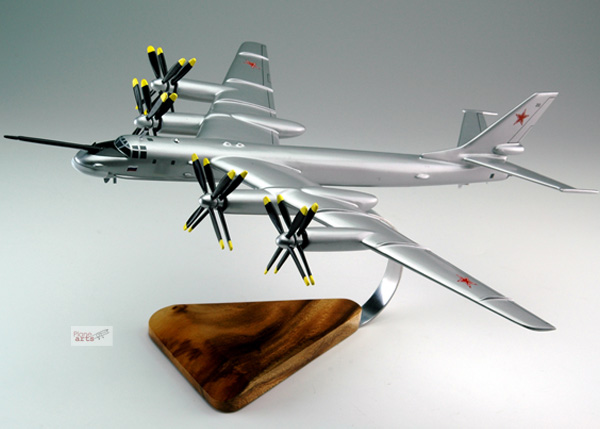

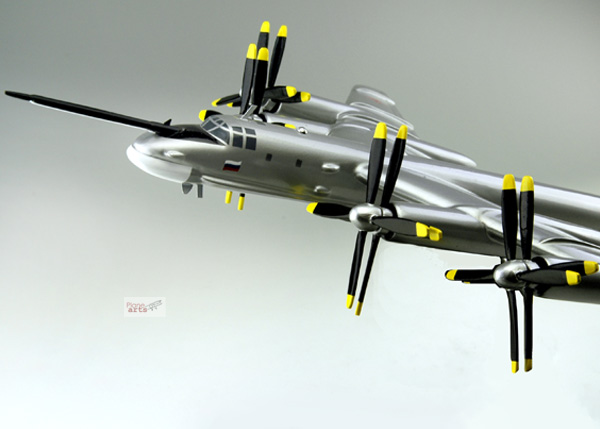

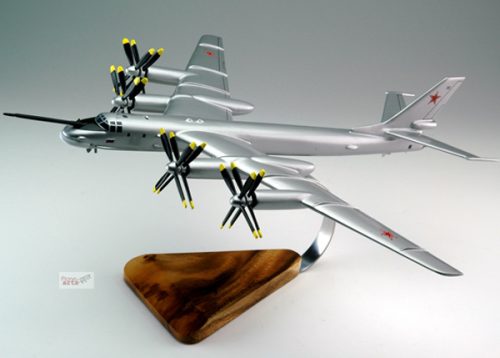
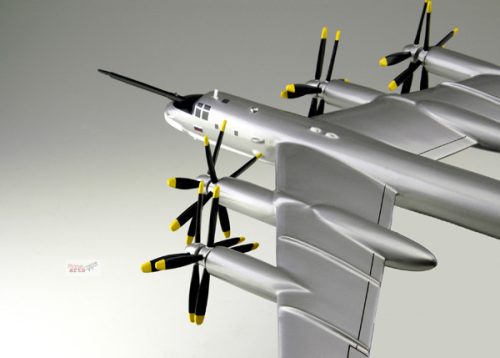

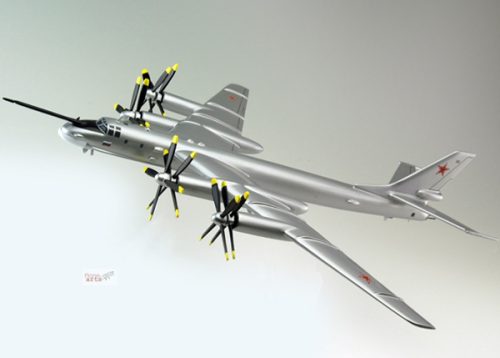

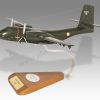
Reviews
There are no reviews yet.